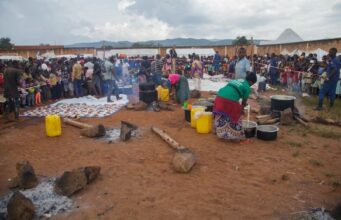NEW DELHI: Tibet has been in a state of permanent political winter since China’s invasion and occupation in 1950. The native people are repressed, its monasteries and way of life are sought to be ‘Sinicised’; its water resources are being exploited while precious minerals are plundered with little regard to the environment; all infrastructure is of dual-use, meaning for both civil and military purposes. StratNews Global brings you a glimpse of Tibet through the eyes of some of its own exiled people. The webinar was organised by the New Delhi-based Foundation for Non-Violent Alternatives.
Strategic Infrastructure In Tibet
Two decades ago, China launched its “Great Western Development” initiative in Tibet. It is less about improving the lives of Tibetans and more about building a robust civil-military infrastructure there. Result: Tibet today has over one lakh km of highways and since 2012, according to China’s official records, $23 billion has been spent, with much of the money coming from Beijing.
China scholar Prof Srikant Kondapalli of Delhi’s Jawaharlal Nehru University, says that Tibet’s Ngari prefecture which borders India, Nepal and Xinjiang, has seen massive expansion of the road network in the last five years. Kondapali says that the Galwan military face-off in eastern Ladakh was an instance wherein the use of these roads indicated how “easy it has become for China to mobilise dual use infrastructure”. Much of Tibet’s infrastructure has military applications and the region has seen a big surge in military logistics. The Chinese have built five airfields in Tibet apart from a fast widening railway network. There’s been a “huge inflow of capital and resources into Tibet,” Kondapalli argues.
The infrastructure serves a purpose: it speeds up the integration of Tibet into China with the Belt & Road Initiative serving as the backbone. It also improves China’s ease of access to India’s northern borders.
Excessive Damming Of Tibet’s Big Rivers
Sounding a warning note about the ecological havoc being caused by damming too many of the big rivers in Tibet was Tempa Gyaltsen Zamlha who heads the Environment & Development Desk of the Dharamsala-based think-tank, the Tibet Policy Institute.
Citing the example of the Banquiao dam collapse in 1975, Zamlha said a cluster of dams apart from the biggest of them all Banquiao, had given way. He noted that the Chinese have been building a similar cluster of dams in eastern Tibet since President Xi Jinping came to power. It could spell disaster for the region, he warned, pointing to the increase in rainfall resulting in unprecedented floods. The rainfall has also led to an increasing number of landslides. Tibet is in a high seismic activity zone and therefore prone to earthquakes.
Among the major rivers originating in the Tibetan Plateau are the Yangtze, Yellow, Brahmaputra, Indus, Mekong, and Salween. With the rivers being dammed, Zamlha wondered what the fate of downstream countries would be if the dams were to collapse. “The impact would be tremendous not just on Tibet but also the countries through which their waters flow,” he remarked.

Human Rights Violations In Tibet
Tibetans are being repressed on the pretext of state security and countering terrorism said Tenzin Dawa, a researcher with the Dharamsala-based Tibetan Centre for Human Rights and Democracy.
Keeping a photograph of His Holiness the Dalai Lama is a crime, as is celebrating the Tibetan New Year, or resisting land grabbing by the Chinese authorities.
Any reference to Tibet’s independence on online platforms invites accusations of separatism and long prison sentences, said Dawa. The grid management systemintroduced by the Chinese in 2011, means check-points for Tibetans with their freedom and privacy curbed, she added.
There are instances of enforced disappearances, and for Tibetans in prison or facing trial, it’s tough to organise legal aid as the Chinese lawyers engaged in their defence, themselves face threats from the authorities. “They are harassed and face the revocation of their lawyers licenses,” said Dawa. The region remains inaccessible to human rights monitors and journalists and there is a black-out of any information coming out of Tibet. Religious freedom continues to deteriorate with the Chinese attempting to foist their own Panchen Lama on the people.
There is a deliberate attempt to marginalise the Tibetan language with the introduction of a bilingual education policy. School children are required to learn Mandarin with that language being favoured over Tibetan.
















